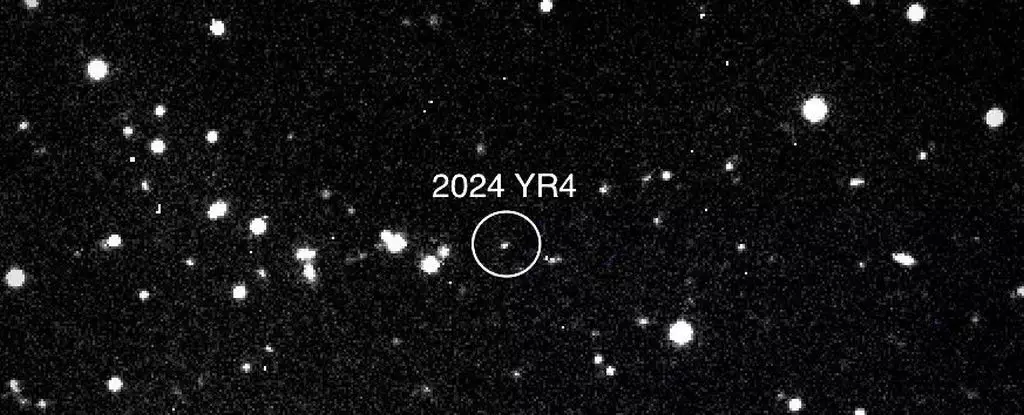The ominous return of asteroid 2024 YR4 has reignited conversations about celestial threats that still loom over our planet, despite previous reassurances of safety. It’s easy to see how new headlines announcing a ‘city killer’ asteroid can evoke a mixture of disbelief and dread. The scientific community has made progress, with probabilities of a direct Earth collision dropping to an almost negligible 0.001 percent. However, this doesn’t negate the lingering anxiety around the potential implications for the Moon and the uncertainty that accompanies such outer space phenomena. Why are we still fixated on an asteroid with such slim odds of catastrophic collision? Because the stakes are profound and extend beyond the immediate peril posed to Earth; they delve into our understanding of cosmic risks as a civilization.
Calculating the Uncertainty
While the remaining threat to Earth is virtually ruled out, the Moon remains within reach of its path during its next approach in December 2032. This revelation by planetary astronomer Andrew Rivkin and his team at Johns Hopkins University may seem like a minor detail. But it raises disquieting questions about our readiness to address these kinds of space threats. Even with a non-zero risk of lunar impact, what does it say about our preparedness as both scientists and as a global community? This uncertainty is a powerful reminder that we exist in an unpredictable cosmos where the unexpected can disrupt our sense of security.
As we await further observations from the James Webb Space Telescope (JWST) planned for May 2025, it’s crucial to grasp the mathematical theories and observational data surrounding 2024 YR4. The asteroid’s discovery in late 2024 caused substantial alarm, particularly when projections indicated a 3.1 percent chance of eventual impact. This figure might sound low, but history shows us that even modest probabilities can yield catastrophic outcomes. Look no further than the Tunguska event of 1908—an airburst that left researchers scratching their heads, manifesting the chaotic unpredictability of asteroids.
The Potential Fallout
The implications of a collision, albeit small, are consequential. With 2024 YR4 measuring approximately 60 meters in diameter, its possibility of lunar impact harbors the chance of delivering repercussions to Earth. Should it strike the Moon, the resultant debris could pose a risk to satellites or even, depending on the trajectory, to our planet itself. Imagine a scenario where such an event dislodges fragments that spiral toward Earth. Could we be better equipped, or do we piece together means of mitigation only in reaction to crises?
Rivkin’s reports concerning the rocky composition of 2024 YR4 exacerbate our collective anxiety. The energy released in a hypothetical lunar impact could range from 2 to 30 megatons of TNT, with a blast radius disproportionately large compared to the damage caused by humanity’s own nuclear tests. Such statistics contextualize why vigilance is imperative. The more we understand, the better we can strategize our planetary defense systems and preemptively combat existential risks.
Keeping Vigilant
Yet, amid the frenzy, it’s crucial to adopt a measured perspective. The astronomical community’s unabated interest in tracking and analyzing 2024 YR4 is commendable, but it highlights a necessary shift towards long-term thinking regarding space threats. The sporadic nature of these observations illustrates the importance of sustained investment in scientific research, collaboration, and near-Earth object tracking.
As political discsourses often inflate or underplay global challenges, it becomes apparent that the conversation surrounding asteroid tracking can no longer be an afterthought. The work must be recognized, funded, and prioritized for future generations. Let us push for a liberal vision that unabashedly champions robust funding for scientific inquiry, and facilitates international cooperation on planetary defense initiatives. The stakes of an asteroid like YR4 aren’t merely abstract—they hold implications that reach far beyond rocket science and complex mathematics.
Our focus on 2024 YR4 must serve as a rallying cry for enlightened global governance in facing interplanetary threats. The asteroid will continue to be observed; our watchful gaze must not falter.

